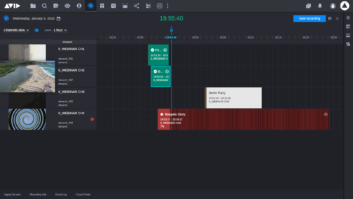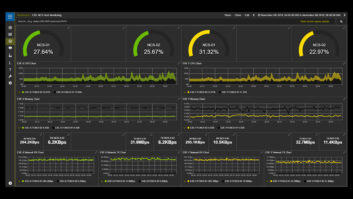
In recent years, the media and broadcast industry has begun to untether itself from the physical constraints of hardware and traditional processes. Media organisations are moving towards both cloud and hybrid asset storage, as editing and content processing workflows become increasingly decentralised. On the contribution and distribution side, IP is being leveraged to reduce costs with spin-up and spin-down broadcast environments that deliver content securely using advanced transport protocols.
But the full range of applications for IP is only just starting to be realised. There are many more areas that can benefit from a cloud-based approach, and the transition will soon touch every link in the chain from camera to viewer.
The media transformation
As the media industry continues to transition from hardware to the cloud, the need for remote workflows has taken centre stage. By integrating IP into remote production, broadcasters can now harness a range of advantages, including enhanced collaboration, flexible network expansion, and economical operations. Through the utilisation of dependable internet connections and fibre-optic connections, remote production has become a feasible alternative for conventional on-site production.
The essential elements of IP-based remote production encompass IP transport for video and audio, servers for remote production, cloud-based services and applications, and network infrastructure and security. From an ingest perspective the benefits of moving away from SDI are clear. A significant reduction in the resources needed to capture content and ingest into asset management systems, including disrupting media industry dependence on costly equipment and travel.
Trimming the excess
With content creation schedules becoming significantly more demanding, any innovation that cuts down on production delays will be given a warm welcome. At transitional stages in the production process such as ingest, it is crucial to avoid bottlenecks. Editors are under enormous pressure and so are naturally keen to get to work on footage straight away, but this can cause challenges if stages are skipped to expedite the process.
However, if production teams can record directly to the cloud, then things move into the fast lane extremely quickly. All that is needed are cameras and encoders, the process can be operated from anywhere, which drastically reduces the number of people who need to be on-site and the hardware that needs to be shipped. This also frees up time to ensure that workflow orchestration processes are properly followed, and assets are tagged with the appropriate metadata – which causes a lot less hassle later down the line.
To meet ongoing consumer demand, remote production needs more flexibility to accommodate sudden schedule changes and improve cost-effectiveness. Recording directly to the cloud plays a significant role in achieving these goals, as it trims the excess all round. From an infrastructure perspective, IP reduces the size, weight, and power consumption for the cables, number of devices, and overall set-up. A lighter set-up makes for a much more agile production crew.
Transport standards such as [SMPTE] ST 2110 carry the necessary payload and synchronisation data to safeguard professional video and audio during transport. It offers much higher density for the number of channels across a significantly smaller physical footprint, both on and off-site. An ST 2110 truck can have more than 200 planned channels of UHD. This is an unthinkable density for a single vehicle using traditional SDI workflows.
Mind the skills gap
Live ISO streams can now be captured directly in the codec needed for editing and file delivery and cloud ingest enables production teams to deploy on-demand set-ups within minutes. Alternatively, crews can opt to record content in a high-resolution, superior-quality format, for subsequent transcoding that meets streaming deliverable requirements. Traditional methods which necessitate saving the footage to a hard drive and physically shipping it to the right location or uploading it to a cloud-based transfer service seem archaic in comparison. So why aren’t more media organisations jumping at the IP opportunity?
As with any transition, whilst the end result might be desirable, the journey to get there can be challenging. IP-based remote production is an intricate process that requires the proper functioning of various components. Currently, we are at crossroads in the industry, especially in the development of a new cloud-based skillset. With technology advancing at a rapid pace, the varied logistics and technical complexity involved in IP implementation is holding some production teams back.
This makes perfect sense, as when transitioning from SDI to IP small details can have big consequences. With a huge number of channels and customisation options for integration the relevant experience is crucial to ensure workflows flourish. The industry has now reached a tipping point, but things always get more complex before they get easier. Production teams must enlist the right technical knowledge initially, so that they are set-up for long-term success. IP standards have changed the game for ingest, it’s time to enjoy the rewards but with a solid foundation in place.







